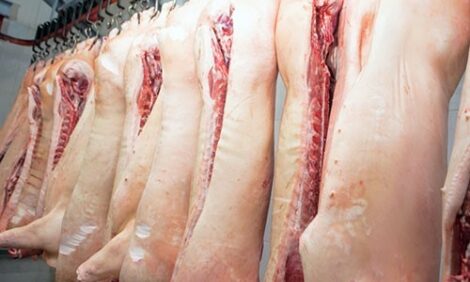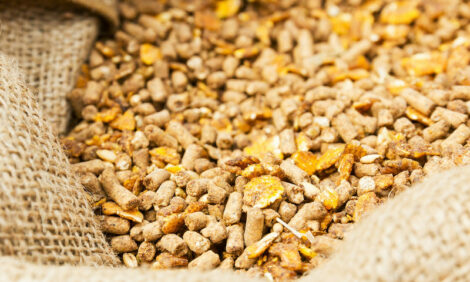



CME: Seasonal Pattern for Hog Slaughter this Fall
US - CME's Daily Livestock Report for 30th September 2008.Today’s rebound on Wall Street (which was, by the way, named for a wall erected by early settlers to keep marauding herds of pigs on Manhattan Island from destroying there crops and gardens — that tidbit is completely free of charge!) did not extend to commodity markets today. The Dow gained 485 points (4.7%), the NASDAQ gained 99 points (5%) and the S&P500 gained 60 points (5.4%) as bargain hunters swooped in after yesterday’s record declines. Agricultural commodities and metals were lower today while energy commodities were higher and currencies were mixed. Deferred dollar index futures gained even though oil was up $4/bbl.
Corn, soybeans and soybean products were hammered again today while wheat was higher in both Chicago and Kansas City. While none of the moves were at the permitted daily limit, they were nonetheless substantial with ‘08 crop corn losing 22 to 25 cents per bushel, ‘08 crop soybeans falling by 43 to 49 cents, soybean meal declining $14 to $16 per ton and bean oil falling a relatively minor 70 to 90 cents per hundred pounds. But the declines are significant in that they take prices on all of these to the lowest levels in months. On the daily charts, we are now at the lowest corn futures prices since January, lowest soybeans futures prices since November 2007 and lowest soybean meal futures prices since March. And the weekly charts have broken through some major technical support levels suggesting that prices could fall further. This could be an opportunity to lock in livestock and poultry production costs at unexpectedly low levels for 12-18 months.
Friday’s USDA Hogs and Pigs Report suggests a very interesting seasonal pattern for hog slaughter this fall. Consider the graph at left. Recall that the report included an estimated inventory of pigs weighing 120-179 pounds that was a surprising 6.1% higher than last year. But it also said that the inventory of pigs weighing 60-119 pounds was only 1.1% larger than last year. That difference is probably too large in a practical sense but it implies strongly that the supply of pigs will be quite large in October and November and then actually get smaller as we get to Thanksgiving and into December. The week after Thanksgiving is almost always a good bet to be the largest slaughter week of the year and it may still be so this year due to delayed slaughter caused by the holiday. But these data say if it is, it will almost certainly be the last hurrah for slaughter runs this year. Lower farrowing intentions for Sep through Feb will offset productivity gains to drive Q1 and Q2 2009 slaughter below 2008 levels.
So how do we account for Canadian pigs? There are two issues here. First, we must consider the breeding herd cutbacks in Canada and their likely impact on feeder pig and market hog imports. As we pointed out Friday (see Figure 2 in that edition of DLR), imports of Canadian slaughter hogs (which are NOT counted in the H&P report since they are never inventoried on U.S. farms) should take about 0.5% to 0.7% out of weekly slaughter runs for the rest of 2008 and Q1 of 2009. In addition, we will likely not have to account for higher imports of Canadian feeder pigs—perhaps for a long time to come. That means that, unlike past quarters, we will not add animals to the slaughter levels predicted by the report. Canada has fewer pigs to ship south AND no one knows yet just how MCOOL will play out.









